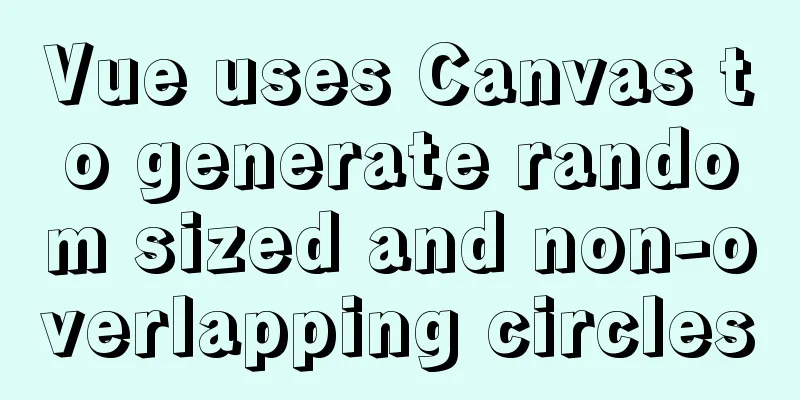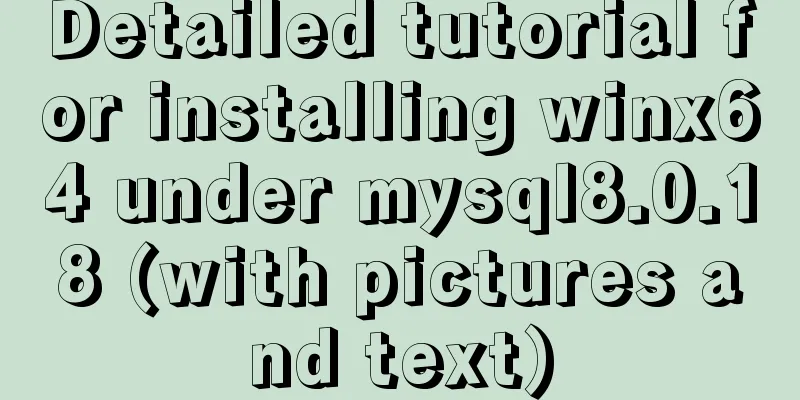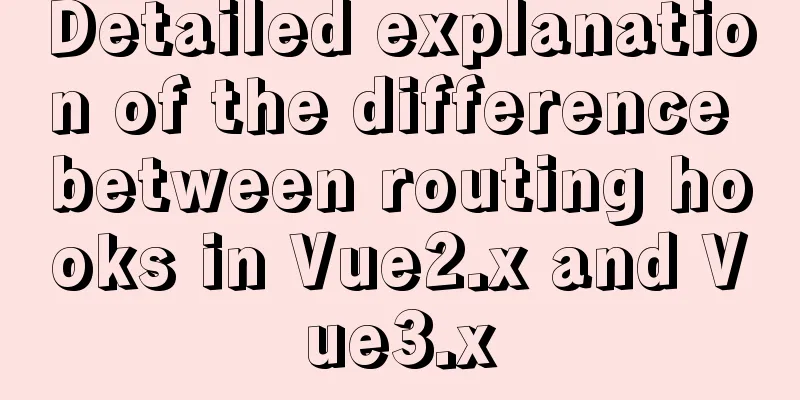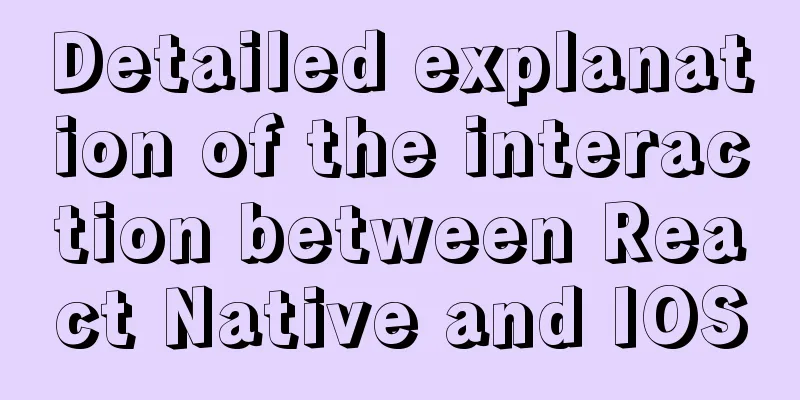Vue uses Canvas to generate random sized and non-overlapping circles

Canvas related documents
Effect picture displayThe first one is the effect of random colors and random sizes aggregated together
The second one is the random background image with random size dispersion effect (the pictures I used here are all the same so different pictures are not shown)
Case complete code
Parent component code
<template>
<div id="home">
<div class="tags" ref="tags">
<circle-box :parentClientWidth="parentClientWidth" :parentClientHeight="parentClientHeight" :dataList="dataList"></circle-box>
</div>
</div>
</template>
<script>
import CircleBox from '@/components/content/circle/Circle.vue'
export default {
components: { CircleBox },
data() {
return {
parentClientWidth: 0,
parentClientHeight: 0,
// canvas simulation data dataList: [
{
follow: 1,
image: 'http://39.99.139.115/demo/RB5.png'
},
{
follow: 2,
image: 'http://39.99.139.115/demo/RB5.png'
},
{
follow: 3,
image: 'http://39.99.139.115/demo/RB5.png'
},
{
follow: 4,
image: 'http://39.99.139.115/demo/RB5.png'
},
{
follow: 5,
image: 'http://39.99.139.115/demo/RB5.png'
},
{
follow: 6,
image: 'http://39.99.139.115/demo/RB5.png'
},
{
follow: 7,
image: 'http://39.99.139.115/demo/RB5.png'
},
{
follow: 8,
image: 'http://39.99.139.115/demo/RB5.png'
},
{
follow: 9,
image: 'http://39.99.139.115/demo/RB5.png'
},
{
follow: 10,
image: 'http://39.99.139.115/demo/RB5.png'
}
],
};
},
created() {},
mounted() {
this.getWidth();
},
methods: {
// Get the width and height of the parent box getWidth() {
this.parentClientWidth = this.$refs.tags.clientWidth;
this.parentClientHeight = this.$refs.tags.clientHeight;
console.log(this.$refs.tags.clientWidth);
}
},
};
</script>
Subcomponent code
<template>
<div>
<canvas id="myCanvas" :width="parentClientWidth + 'px'" :height="parentClientHeight + 'px'"></canvas>
</div>
</template>
<script>
export default {
// Receive data props: ['parentClientWidth', 'parentClientHeight', 'dataList'],
data() {
return {
dataListCopy: this.dataList
}
},
created() {
this.$nextTick(() => {
// Initialize this.circleInfo()
})
},
mounted() {},
methods: {
circleInfo() {
let that = this
class Circle {
constructor(x, y, r, color) {
this.x = x
this.y = y
this.r = r
this.c = color ? color : this.getRandomColor()
}
// Random color getRandomColor() {
let r = Math.floor(Math.random() * 100) + 155
let g = Math.floor(Math.random() * 100) + 155
let b = Math.floor(Math.random() * 100) + 155
return `rgb(${r},${g},${b})`
}
}
class RandomCircle {
constructor(obj) {
this.c = document.getElementById(obj.id)
console.log(this.c)
this.ctx = this.c.getContext('2d')
this.dWidth = this.c.width
this.dHeight = this.c.height
this.fix = obj.fix || true
this.minMargin = obj.minMargin || 20
this.minRadius = obj.minRadius || 30
this.radiuArr = obj.radiuArr || [30, 30, 30, 30, 30, 30, 30, 30, 30, 30]
this.total = obj.total || 10
this.circleArray = []
this.circleNumber = 1
}
drawOneCircle(c, index) {
// console.log(c, index)
let ctx = this.ctx
ctx.beginPath()
ctx.strokeStyle = cc
ctx.fillStyle = cc
// Draw a circle ctx.arc(cx, cy, cr, 0, 2 * Math.PI)
ctx.stroke()
ctx.fill()
// ctx.textAlign = 'center'
// ctx.textBaseline = 'middle'
// ctx.fillStyle = 'black'
// ctx.font = '1rem Microsoft YaHei'
// ctx.fillText(that.dataListCopy[index].follow, cx, cy - 10) // Text inside the circle let img = new Image()
img.src = that.dataListCopy[index].image
ctx.drawImage(img, cx - cr, cy - cr, cr * 2, cr * 2)
this.circleNumber++
}
check(x, y, r) {
return !(x + r > this.dWidth || x - r < 0 || y + r > this.dHeight || y - r < 0)
}
// Get the radius of a new circle, mainly to determine the distance between the radius and the nearest circle getR(x, y) {
if (this.circleArray.length === 0) return Math.floor(Math.random() * 20 + 20)
let lenArr = this.circleArray.map((c) => {
let xSpan = cx - x
let ySpan = cy - y
return Math.floor(Math.sqrt(Math.pow(xSpan, 2) + Math.pow(ySpan, 2))) - cr
})
let minCircleLen = Math.min(...lenArr)
let minC = this.circleArray[lenArr.indexOf(minCircleLen)]
let tempR = this.fix ? this.radiuArr[this.circleArray.length] : minCircleLen - this.minMargin
let bool = this.fix ? tempR <= minCircleLen - minC.r : tempR >= this.minRadius
return bool ? tempR : false
}
// Generate a circle with a randomly generated center.
// If the radius is not suitable after 200 consecutive generation, terminate the process createOneCircle() {
let x, y, r
let createCircleTimes = 0
while (true) {
createCircleTimes++
x = Math.floor(Math.random() * this.dWidth)
y = Math.floor(Math.random() * this.dHeight)
let TR = this.getR(x, y)
if (!TR) {
continue
} else {
r = TR
}
if (this.check(x, y, r) || createCircleTimes > 200) {
break
}
}
this.check(x, y, r) && this.circleArray.push(new Circle(x, y, r))
}
// If generating new circles fails 100 times, terminate the scheme.
// If none of the 100 generated solutions are suitable, terminate the process.
init() {
let n = 0
while (this.circleArray.length < this.total) {
this.circleArray = []
let i = 0
while (this.circleArray.length < this.total) {
this.createOneCircle()
i++
if (i >= 100) {
break
}
}
n++
if (n > 100) {
break
}
}
// Draw circles from large to small according to the radius.
this.circleArray
.sort((a, b) => br - ar)
.forEach((c, index) => {
this.drawOneCircle(c, index)
})
}
}
// console.log(this.circle);
const p = new RandomCircle({
id: 'myCanvas',
total: that.dataListCopy.length //Configuration quantity})
p.init()
console.log(p)
console.log(p.circleArray)
}
}
}
</script>
SummarizeThis is the end of this article about how Vue uses Canvas to generate random-sized, non-overlapping circles. For more information about how Vue uses Canvas to generate random circles, please search for previous articles on 123WORDPRESS.COM or continue to browse the following related articles. I hope you will support 123WORDPRESS.COM in the future! You may also be interested in:
|
<<: Realize the CSS loading effect after clicking the button
>>: How to create a table in mysql and add field comments
Recommend
Detailed explanation of how Node.js middleware works
Table of contents What is Express middleware? Req...
JS Difficulties Synchronous and Asynchronous and Scope and Closure and Detailed Explanation of Prototype and Prototype Chain
Table of contents JS Three Mountains Synchronous ...
Customization Method of Linux Peripheral File System
Preface Generally speaking, when we talk about Li...
Detailed explanation of the processing of the three Docker Nginx Logs
Because colleagues in the company need Nginx log ...
The difference between Display, Visibility, Opacity, rgba and z-index: -1 in CSS
We often need to control the hidden, transparent ...
Sample code for deploying ELK using Docker-compose
environment Host IP 192.168.0.9 Docker version 19...
Understanding JavaScript prototype chain
Table of contents 1. Understanding the Equality R...
Solve the MySQL login 1045 problem under centos
Since the entire application needs to be deployed...
How to hide elements on the Web and their advantages and disadvantages
Example source code: https://codepen.io/shadeed/p...
Vue implements a shopping cart that can change the shopping quantity
This article shares with you how to use Vue to ch...
SQL implementation of LeetCode (178. Score ranking)
[LeetCode] 178.Rank Scores Write a SQL query to r...
JavaScript implements the detailed process of stack structure
Table of contents 1. Understanding the stack stru...
How to customize Docker images using Dockerfile
Customizing images using Dockerfile Image customi...
Detailed tutorial on deploying Django project under CentOS
Basic Environment Pagoda installation service [Py...
Detailed explanation of angular content projection
Table of contents Single content projection Multi...











